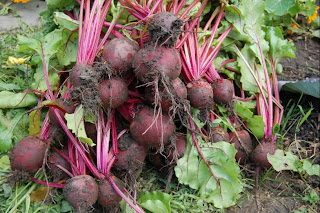In basic terms, you will need apples, soft fruit or berries and honey. The photos in this post were taken in late November when I made fruit leathers with hawberries, just about the last wild fruit I could find growing near out village. In the late summer I also made leathers with blackberries.
The quantities I used in November were:
1 kg apples (wild eating apples)
700g hawberries
250g honey
Chop the apples and add to the jam pan. No need to core or peel. Remove as many stalks as possible from the hawberries and add to the jam pan. So dryish berries like haws, add a couple of glasses of water. You are unlikely to need to add water if you are using soft fruit like blackberries as they contain plenty of moisture.
Heat the pan and leave to simmer until the fruit is a soft pulp. Press it through a sieve and then add the honey to the puree.
Then put some baking parchment on a couple of baking trays and spread the puree thinly over the paper. Put the trays into the oven at a very low temperature, 60C, and bake for about 10 - 12 hours (yes, that long!)
When they are done, you should be able to peel the leathers from the paper. They have the texture of leather and are translucent.
They can be stored by being rolled up in the baking parchment and stored in a cupboard or box. You can cut puts off of cut them into shape and hang them from the Xmas tree before eating them.
I don't have any of my own but I can imagine kids loving these. Parents concerned about cramming too much sugar into their children can hand these out guilt free!




























